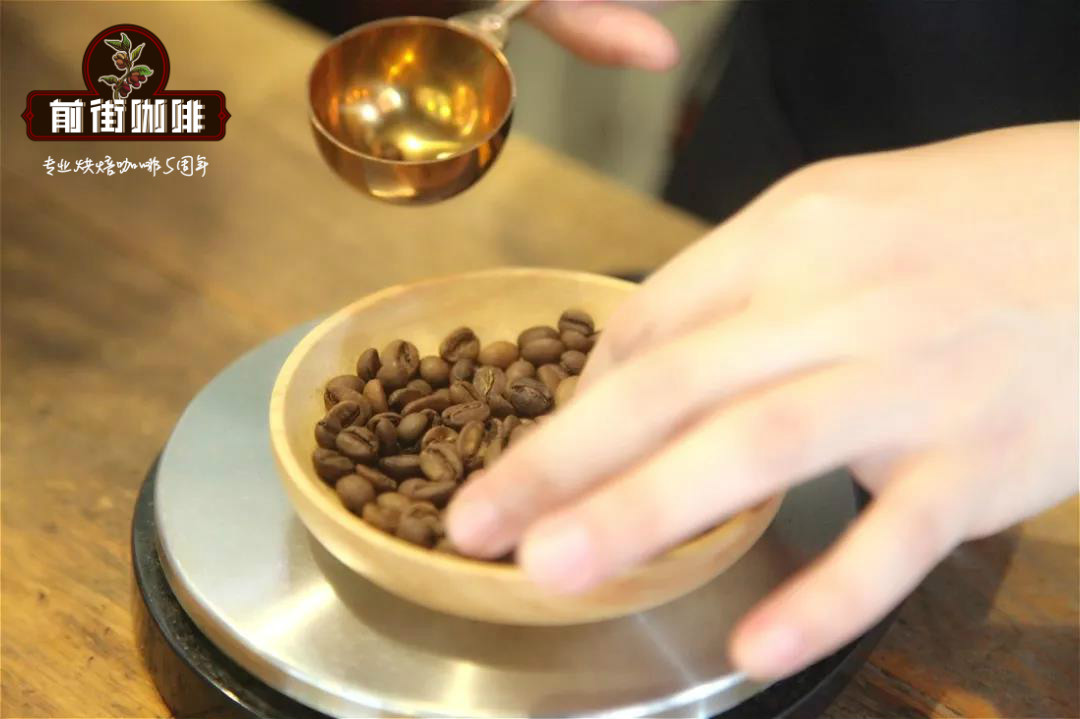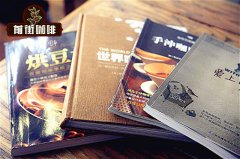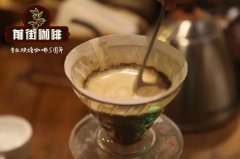How do you drink Mexican coffee? how do you drink Mexican local coffee? what's the taste and flavor?

Professional coffee knowledge exchange more coffee bean information please follow the coffee workshop (Wechat official account cafe_style)
Probably all Chinese people come into contact with coffee, all in Nestl é instant bags. For a long time, from the original flavor, milk flavor to extra strong, black coffee, and then to latte, mocha, white coffee. With the non-rest noon in high school in summer, it is hard to study hard.
I didn't know the coffee beans until I went to Starbucks for the first time after work. Maybe he was obsessed with tea from an early age, and the taste buds inevitably felt the same way. It was only then that he really fell in love with coffee. From different flavors of coffee beans to different types of coffee utensils, have become my favorite collection.
So far, the siphon pot is my favorite. Watching the beating alcohol, when the coffee slips down the beaker, there is always a pleasure to control everything. And really cook well, it is necessary to pay attention to skills, from the water quality and quantity, the size and temperature of the fire, the grinding amount of coffee beans …... So I think brewing coffee is the same as Chinese tea art, it is an art.
This art seduces me and is fascinated by the coffee beans in different producing areas, the degree of roasting, the way they are cooked, and so on. Of course, hot to hot, I only generally like. I know a boy who can taste details such as the altitude of the place of origin, Rain Water and so on. You see, it's just like Chinese tea.
The first coffee beans to come into contact with are Brazil, Colombia, Jamaica, Ethiopia, Java, Sumatra, Cuba, Guatemala, Yemen.
I didn't know there was good Mexican coffee here until I went to Mexico.
In Mexico, coffee is as common as Chinese tea and can be drunk from morning till night. I once asked Pablo strangely, can't you sleep when you drink coffee at night? He told me that maybe they had been used to it since childhood, so it didn't matter!
After living for a long time, I found that drinking coffee did not affect my sleep, whether I was sleepy or sleepy, and I was not excited when I went to bed, no matter how much coffee I had poured. Only at this time did I know that the reason why people in Mocheng drink coffee unscrupulously, in addition to habits, may be because of altitude. The average elevation of Mocheng is more than 2000 meters, and caffeine does not seem to have any effect in front of the altitude. So coffee, for Mexicans, is just a pure drink.
Compared with most Chinese families who are used to instant coffee, Mexican families consume a lot of coffee beans. Affected by the region, they are generally accustomed to American coffee. Unlike my preference for siphon pots, they generally use American coffee machines.
Mary (the housekeeper of Pablo) makes a large pot of coffee first thing in the morning, but even so, we may not have enough to drink. Interestingly, Pablo prefers black coffee, or black coffee, with nothing. But his father likes more milk and sugar. I like to drink Mexican coffee with milk and sugar because of my stomach. Pablo often laughs at me like their father with his sister. Not only that, I am more hypocritical, must be fresh pure milk and brown sugar, as well as stronger coffee. Every time Pablo has to buy fresh whole milk for me.
When it comes to coffee, I must have reached a new level, which is different from drinks. So Pablo often takes me to different coffee shops and roadside stalls to taste different kinds of coffee. What impressed me was the sweet coffee with cinnamon and the coffee with chocolate flavor. Comparatively speaking, I prefer heavy roasted coffee.
Later, when I was meeting and chatting with my friends in Pablo, I learned that coffee was once the pillar of Mexico's economic industry, and as a major crop, it had made a lot of contributions to driving economic growth.
And Chiapas is most famous for its coffee because of its proximity to Guatemala. Unfortunately, for some reason, the local government sold all the coffee farms in the best producing areas to Germany a decade ago, and Germany brought the coffee to the world. Only a limited number of people are lucky enough to taste the best coffee in their country.
To my great surprise, Pablo's friend Bonbon heard that I like heavily roasted coffee very much. Before I returned home, she spent a week looking for the best organic green coffee and asked the driver to deliver it before I returned home that day.
This is my first personal contact with Mexican Chiapas coffee.
We went to Mexico again during the Spring Festival. Mr. Pablo, the former governor of Chiapas, invited us to Chiapas because of business cooperation. I was able to learn more about the coffee here for the second time.
Only then did I know that planting and picking Mexican coffee beans is similar to tea, and it is also divided into seasons, altitude of producing areas, and so on, while the same coffee beans baked by different methods are also very different. Because Chiapas is close to Guatemala, the coffee here is somewhat similar to that of Guatemala. However, due to its own geographical and climatic reasons, Chiapas coffee beans have better aroma and sour taste, mellow is not very high, medium.
Because of the arrangements of the Chiapas government, we were able to communicate with some of the largest coffee manufacturers in the state. Nearly half of Mexico's coffee beans come from the state, but unfortunately, most of them are sold to the United States.
Within two days of returning to Mexico, Governor Pablo invited Luis Herrera, president of the Mexican Coffee Association, and his party to learn more about coffee in Chiapas for the third time.
President Luis Herrera brought many samples, from picked green coffee beans to lightly roasted, heavily roasted coffee beans, coffee powder, explained to us in detail each type of coffee.
Like Chinese tea, Mexican coffee needs to be seen, smelled and tasted.
A look: the roasting degree can be judged by the color of coffee beans. The lighter the color, the lower the baking. Of course, there is also a slight difference in color between lightly roasted and heavily roasted coffee.
Second smell: look at the color can not completely determine the degree of baking, after all, each production area each process is different, but the nose is more worthy of trust. One is to smell whether the coffee beans are fresh, the fresh ones have the original fragrance; the other is to smell the roasting degree, the more deeply roasted coffee beans have a strong roasting smell, and some even have smoke and fire. Chiapas is located on the plateau, where heavily roasted coffee beans have a strong smoky and sour taste, while lightly roasted coffee beans have a hint of cocoa.
Unfortunately, the Marriott Hotel we dated could not provide us with a coffee maker and was not happy to make coffee for us. So the president of Luis Herrera had to come to the boiled water and the cup, put the coffee powder in the cup and brew it with boiling water.
Fortunately, the grinding is quite delicate, which makes it possible to give full play to the aroma and taste of coffee. How thin is it? when I returned home, I made it in an American coffee machine with my own filter. The coffee powder dropped a pot, and I had to put another layer of filter paper to make it more appropriate.
After brewing, the smoky aroma and sour taste are more obvious, and there are even nutty aromas and soil aromas with distinct layers. This is the chic feature of Chiapas coffee beans.
After careful taste, you will find that it is neither the weight of Mantenin, nor the lively jump of Kenyan acid, which seems to be brought out of the soil, mild, moderate, but also smooth, as soft as chocolate. Its own nutty aroma is also more abundant.
I told them that some of the taste of Chiapas coffee is very similar to Chinese rock tea, such as Dahongpao, Dancong and so on. At the end of the drink, you can also have a taste of tea.
Of course, compared with the introversion of tea, Chiapas coffee is more unrestrained and enthusiastic, just like the Mexican people.
In the end, if you want to deeply experience another Mexican style, you might as well add Mexico's national wine, tequila, to your coffee, and you will feel this different exotic nation from the taste buds!
Important Notice :
前街咖啡 FrontStreet Coffee has moved to new addredd:
FrontStreet Coffee Address: 315,Donghua East Road,GuangZhou
Tel:020 38364473
- Prev

The different Trade methods of Mexican Coffee Fair Trade interpretation of Mexican Coffee Industry
Professional coffee knowledge exchange more information about coffee beans Please pay attention to the coffee workshop (Wechat official account cafe_style) the story of coffee starts from international trade. Unequal trade, on the one hand, is the outcry market of huge funds, no matter how much profit can not make up for the greed of businessmen, on the other hand, countless small coffee farmers are destitute and destitute, and the forest falls down.
- Next

History of Yemeni Coffee what are the varieties and famous brands of coffee grown in Yemen
Professional coffee knowledge exchange more coffee bean information Please pay attention to Coffee Workshop (Wechat official account cafe_style) Mocha originally refers to the beans transported by the Arabian port of Mocha, located in the upper gate of the Arabian Peninsula (Yemen) countries, today's pure rare mocha has ten rare, pure mocha is rare and expensive, rich and mellow flavor. The word used to be associated with coffee.
Related
- How did the Salvadoran coffee industry develop in Central America?
- What exactly does the golden cup extraction of coffee mean?
- The Origin of Coffee flower
- [2023 Starbucks World Earth Day] there are more meaningful things besides free Starbucks coffee!
- What kind of coffee is there in Spain? 9 Flavors of Spanish Coffee
- Aromatic African coffee| Kenya's coffee culture and historical production area
- Liberica Coffee Bean knowledge: the characteristics of Liberian Coffee beans of the three original species of Coffee beans
- The origin and formula of Spanish latte introduces the taste characteristics of Bombon coffee in Valencia, Spain.
- How to adjust the solution of over-extracted coffee
- What is the tasting period of coffee beans? What is the period of coffee and beans? How should coffee wake up and raise beans?

